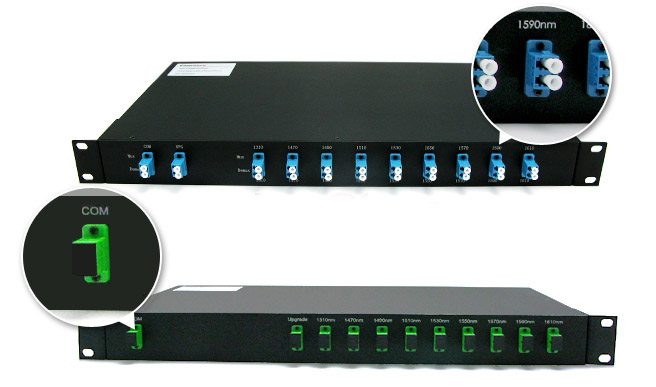Nowadays the voice, video, and data networks are becoming more complex and requiring more bandwidth and faster transmission rates over ever increasing distances. To fulfill these demands, network managers are relying more about fiber optics. Nevertheless the reality that many providers, enterprise corporations, and government entities are facing is the fact that once their available fiber infrastructure is exhausted, laying more fiber is not really an inexpensive or feasible option. So, so what now?
Many groups are embracing Wave Division Multiplexing (WDM) technologies in order to increase capacity about the existing fiber infrastructure. WDM is a technology which multiplexes multiple optical signals onto a single fiber by utilizing different wavelengths, or colors, related to. By utilizing WDM communication methods network managers can realize a multiplication effect inside their available fiber's capacity.
WDM is protocol and bit-rate independent. WDM-based networks can transmit data in IP, ATM, SONET/SDH, and Ethernet, and look after bit rates between 100 Mbps and 40 Gbps. Therefore, WDM-based networks can hold various kinds of traffic at different speeds over an optical channel. It makes a less expensive approach to quick reaction to customers' bandwidth demands and protocol changes. To control bandwidth and expand capacity of existing fiber optic backbones, WDW-based networks by simultaneously combining and transmitting multiple signals at different wavelengths within the same fiber.
As segmentation and delivering business services tend to be more rampant, WDM optical solutions are becoming a valuable tool for cable operators. Using simple two-wavelength WDM can increase service capacity by twice within the same volume of fibers. For a long time, there've also been some limited solutions using more complicated WDM techniques that may carry four or even more optical signals on the same fiber. Recently cable equipment manufactures have released innovations using WDM that transport multiple broadcast optical signals on the single fiber, making node segmentation more cost-effective and operationally friendly.
WDM greatly enhances the capacity of systems. You will find mainly two variations of WDM which can be popular: Coarse WDM (CWDM) and Dense WDM (DWDM). Each signal is at a different wavelength and each variation has different capabilities, costs, and operational friendliness, used in different WDM Multiplexer (or Demultiplexer) devices. Multiplexer combines several data signals into one signal for transporting on the single fiber while Demulitplexers separate the signals conversely.

CWDM technologies have only been created for HFC networks within the return-path up to recently. Regarding return-path, approximately eight transmitters at different CWDM wavelengths can be multiplexed onto an individual fiber simply by using a CWDM MUX (CWDM Multiplexer). This could be useful when the return-path has a lot more bandwidth contention compared to the forward-path, so 2X4 node segmentation may be sufficient.
DWDM technologies offers much flexibility for node segmentation, yet it's more expensive and operationally challenging than CWDM. The method to segment nodes utilizing DWDM within the forward-path is known as Broadcast/Narrowcast DWDM Overlay. It utilizes two fibers within the downstream: one fiber having an optical signal with all the broadcast content, and something fiber with multiple optical signals on DWDM wavelengths, each containing unique narrowcast happy to obtain a segment. On the node, the narrowcast DWDM wavelengths are separated onto their unique fibers. The narrowcast content will then be overlaid with the broadcast content at the node in a choice of the RF domain or perhaps the optical domain.
As WDM technologies become very popular today, to discover suitable equipment that related to them comes to be so important to networking users. Fortunately, there are various kinds of CWDM/DWDM products available in FIBERSTORE, the biggest supplier of WDM equipments in China who can provide all fiber optic network solutions. Visit the website for additional information.
No comments:
Post a Comment